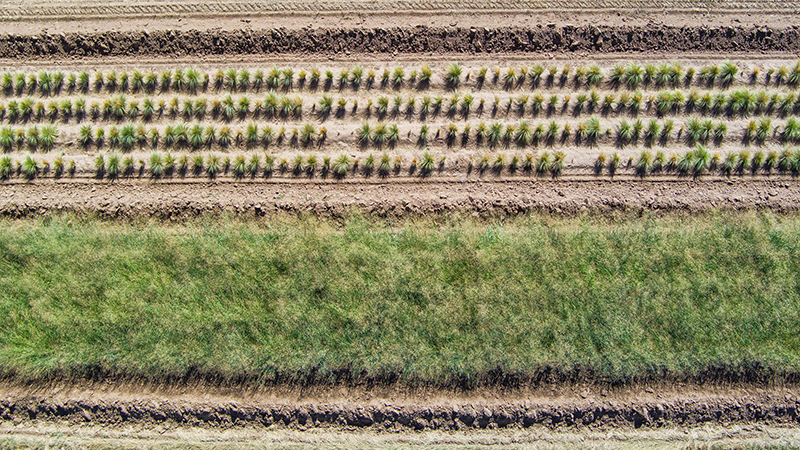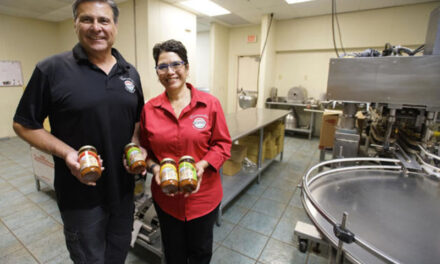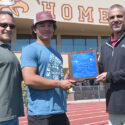LOS LUNAS — NMSU’s Agricultural Science Center at Los Lunas is home to a number of research projects. But one has garnered great interest and highlights a decades-long collaboration between the center and the United States Department of Agriculture’s Natural Resources Conservation Service.
The center has had a long-standing cooperative agreement with the NRCS Plant Materials Center that has been active and fruitful for more than 65 years, said Mark Marsalis, NMSU Extension forage specialist.
“Since 1957, both entities have collaborated to address natural resource, agronomic and horticultural issues in the Middle Rio Grande Valley and the broader Southwest region.” Marsalis said.
NMSU and the NRCS Plant Materials Center have several ongoing, long-term projects investigating grass varieties and how various types of perennial grasses and forbs contribute to the sustainability of natural resources and local economies in New Mexico.
The USDA-NRCS projects highlight native grasses that can lower soil surface temperature, reduce soil erosion, decrease soil compaction and improve water infiltration. However, a project headed by Marsalis is looking at how improved, non-native grass species can provide a greater yield and quality potential under irrigation than traditional native grass.
“In addition, large tracts of potentially productive land are going unutilized or have been abandoned in much of the region, including on tribal lands,” he said. “Understanding how these lands can be put into the production of resilient forage systems will allow for improved utilization of our natural resources, thereby stimulating local economies.”

NMSU photo by Josh Bachman
New Mexico State University’s Agricultural Science Center at Los Lunas is hosting projects looking into the benefits of both native and non-native grasses.
During the center’s 2023 field day, USDA-NRCS Plant Materials Center Manager Jarai Mon discussed major steps for developing improved native grass cultivars and producing native grass breeder seed.
“Throughout New Mexico and surrounding states, this breeder seed serves as the base of commercial production,” Mon said. “The commercially produced seed is then used within USDA conservation programs, including the Environmental Quality Incentives Program and the Conservation Reserve Program.”
Because of their physiological adaption to drought and poor soil environments, Mon said, native grasses are effective conservation tools for soil erosion control, stabilization of roadsides, disturbed areas and steep slope sites, and reclamation of abandoned cropland. In addition, native grasses provide food sources and habitat for wildlife and high-quality forage for livestock.
In recent years, some forage producers in the Southwest have converted parts of their irrigated pastures to native grass pastures due to drier weather and less irrigation water availability. Native grasses grow well in the areas of their natural adaption with minimum inputs of water, fertilizers and pesticides.
However, the maximum productivity potential is generally less than non-native species. Marsalis said he wonders if newer varieties of introduced species would fair just as well or better than natives under these harsh conditions.
Marsalis’ NRCS-funded project examines options that may provide greater yield and quality in higher elevations and irrigated areas, compared to native grass species, even under less-than-ideal growing conditions. The project targets the northern half of the state where cool-season species are best adapted, and is specifically focused on Native American tribal lands in those regions.
“Introducing non-native grasses may help improve the utilization of natural resources, while increasing land output and economic impact,” he said. “Increase the output of these lands with high-value, resilient forage systems can, in return, improve the lives and livelihoods of families dependent on the land. While native species have been a mainstay on tribal lands, introduced species have not been utilized to a large degree.”
For his project, Marsalis is comparing the productivity of non-natives to native species, including releases from the Los Lunas PMC, under various irrigation and management scenarios and locations.
Several of these grasses and legumes were on display during this year’s field day at the Los Lunas science center, including non-traditional, cool-season species like meadow fescue, meadow bromegrass, hybrid green wheatgrass, pubescent wheatgrass, falcata alfalfa and others. Current tribal sites growing the forages include Ohkay Owingeh and Santa Clara pueblos.
NRCS is also assisting the project by providing conservation technical assistance and programs to American Indian and tribal governments. NMSU Tribal Cooperative Extension agents are also playing a critical role as coordinators to ensure the success of the project, Marsalis said.

















